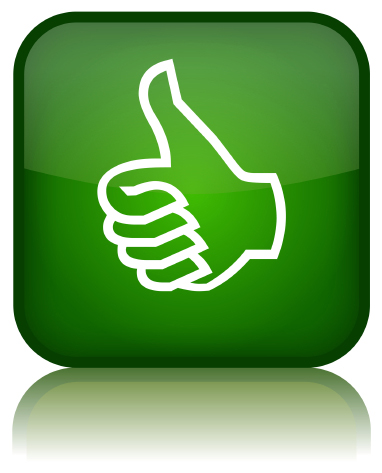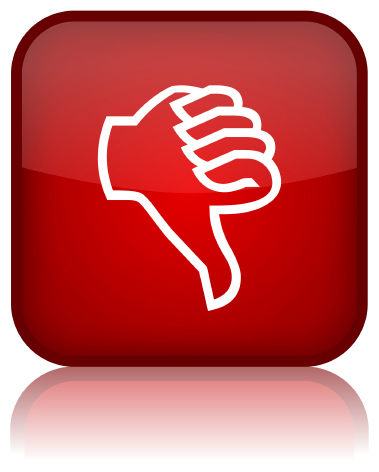They say the grass is always greener on the other side, but which side suits you and your needs best? Before making a potentially life-altering decision, read on to discover the differences between, benefits to, and drawbacks of being full-time or freelance designer.
The In-House Designer
Due to the varying nature of business models, responsibilities appropriated to the in-house designer varies greatly from company to company. On the most basic level, however, an in-house design position includes meeting with internal and external customers, creating concepts, mocking up proofs, presenting those ideas to the team, executing the overall layout, processing proofs, production of final files, archiving of native and final files, and updating all projects as needed. Further responsibilities can also include acquiring bids from printers, illustrators, photographers, and other freelance designers, press checks, project management, and image or topic research.
 The upside?
The upside?
• The team succeeds or fails as one. Everyone is in the foxhole together. Working in such close and constant contact propagates a feeling of camaraderie with coworkers. The team environment comes with a vested interest in the company as a whole and includes everything the company releases for public consumption.
• The in-house designer is often more involved with varying projects which don’t necessarily fall under the “design umbrella� as well as the conceptual or brainstorming process than a freelance designer may be. Fulltime, in-house designers are often valued by other departments as an equal team members whose opinions carry more weight. With this level of involvement, the designer can take pride and ownership in their work and give them a receive a true feeling of career fulfillment which some freelance designers find lacking in their day-to-day transactions.
• There is something to be said for getting to know a brand and style so well the designer becomes the go-to style expert. Once the brand requirements are second nature, a new layer of design can begin. On this level, constantly refreshing and updating projects or pages is an art in and of itself. Success as an in-house designer often means appreciating the little things, and understanding that small changes make big differences.
• And most obviously, a consistent paycheck is quite favorable and reassuring. The security of knowing that the next paycheck is only a few days away helps to keep many-a-graphic-artist from starving, not to mention the added benefit of paid vacations and sick leave. Many companies also subsidize part of the employees’ health, short-term and long-term disability insurance, and provide a group retirement plan (in some cases, they even match the employee contribution up to a certain percentage) and reimburse continuing education efforts.
 The downside?
The downside?
• Working within the same style can feel repetitive, and it is difficult to keep the design feeling original and fresh.
• Organizations sometimes confuse design with production, and designers are often expected to simply execute what has been dictated.
• The constant proximity to coworkers can be difficult if the tense and subjective design environment causes personality conflicts.
• Most positions are salaried instead of compensated on a per-hour basis, and the modern day in-house designer will be working far more than the standard 40-hour week without any additional monetary gains. The economy also plays a role in the designer’s day-to-day workload. When companies down size, the responsibilities of the remaining staff are exponentially increased.
• Typically, an in-house designer makes less per hour than their freelance counterpart, they have to work more and take home less. This trade off is made to finance the aforementioned benefit package.
The Freelance Designer
Freelancing truly requires a jack-of-all-trades mentality because the designer’s success or failure depends on how well they advertise and sell their skills long before the actual act of designing is able to begin. In addition to the networking and marketing necessary to grow a client base and build lasting business relationships, the freelance designer is also responsible for their own administration and accounting needs. The freelancer must also be comfortable creating and writing bids for projects, presenting proposals and ideas, and be available to the client at all times. Once a client and project have been won over, the actual design work can begin and includes spec and design work, reworks, proofs, production and archiving.
 The upside?
The upside?
• A freelance designer gets the luxury of variety. The variety of projects, styles, clients and hours is a great way to keep day-to-day work and a portfolio fresh impressing.
• There is great independence in working for one’s self. The designer may not be calling all the shots (after all, it is the client’s project), but they are definitely at the helm and as such can create a work environment, flow and process of their choosing.
• Repeat business is the equivalent to money walking in off the street and is a marker of a job well done. The in-house designer does not get paid per project or hour, so repeat business doesn’t always feel like a positive, but to the freelance designer it means dollar signs. The trust a client shows by returning validates the designer’s design skill and business acumen. As client lists grow, the designer is able to spend less time on marketing and advertising and more on the design work. As these relationships solidify and grow, natural working relationships and rhythms emerge and speed the process as well as underscore the client’s confidence in the designer.
• The ability to truly control one’s income is quite empowering. Freelance designers can make as much or as little as they want by effectively managing time to achieve whatever goals they may choose.
 The Downside?
The Downside?
• All business ventures have highs and lows, emotionally and economically. A freelance designer must be prepared to withstand inconsistent paydays, delinquent clients, and poor communicators.
• Building relationships, winning projects, and proving not only design agility but also professionalism are all important and time consuming pieces to the freelance puzzle. A considerable amount of time and energy must be devoted at the outset of a freelance career to things not necessarily design- related but instead to tasks that don’t qualify as billable hours which makes a long day feel even longer.
• When bidding on projects, the designer must track the pulse of the economy and constantly price themselves within the competitive ballpark without under or over charging for their services. Charge too little and the quality of work may come into question, charge too much and business may be driven away.
• There is not a benefit package waiting to backup the designer should they fall ill or take a holiday.
When it comes down to it, every position has both positive and negatives. The trick to finding your niche in the design community is to be perfectly honest with yourself about your strengths, weaknesses, and career expectations. Armed with the guide above and the career goals you’ve set for yourself, you should have all tools you need to get started on the right path for your future.
The post Full-time or Freelance? appeared first on Design Reviver.

 Â
 















